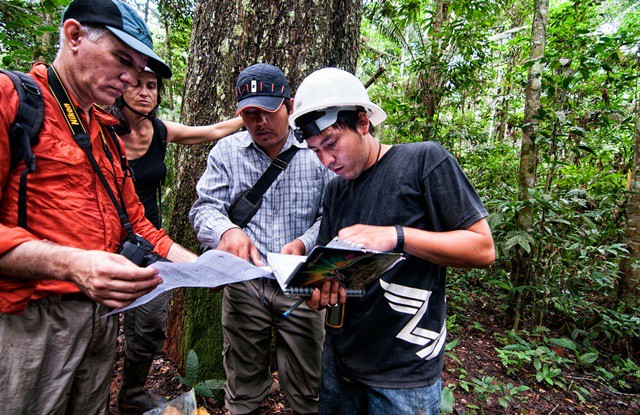
Communicating science and research findings, and their implications, is a challenge for senders as well as receivers. We strive to have rigorous and relevant evidence at one end, and a democratic decision process at the other. But we will still fail if communication between the two malfunctions or is overwhelmed by information that is only poorly based on science. The goal is to package relevant results so that the consequences of action (or inaction) are understood, picked up and cannot lightly be ignored.
This blog entry is a personal reflection on the possible consequences of using good information badly and – more dangerously – when bad information is used convincingly. I borrowed the figure above from Gill Petrokofsky, of the University of Oxford’s Biodiversity Institute, to schematically illustrate possible scenarios.
Many people, including academics, policy-makers and those in the ‘fourth estate’ whose primary role is communication, are engaged in detailed analysis of the communication of climate change science (e.g. Roger Pielke, Stephen Schneider). The IPCC assessment process and reports and a wide body of science lays the groundwork for achieving scientific consensus on climate change. It is therefore disconcerting to read a recent paper showing that some very influential media channels (Fox News and Wall Street Journal) misrepresent this consensus in as much as 80-90% of their climate change-related articles and interventions. To me, this is a strong case of poor information used well – highly influential communicators have packaged misleading information and launched it on an audience of largely non-scientists.
An example of good information used poorly comes from a completely different field. As many recall, the Challenger space shuttle was destroyed shortly after take-off on 28 January 1986. As described and well-referenced in Edward Tufte’s excellent book, the scientists and engineers had beforehand concluded that it was too cold to launch, based on data and experiences from earlier missions. But these results were not communicated in a way that enabled the implications of a launch to be clearly understood by the decision-makers. Despite existing evidence, disaster happened. This is just one dramatic reminder that the ways in which results are communicated can be critical.
Turning now to forestry. How successful are we in convincing stakeholders about the state of forests and forestry? There is plenty to read about the interface between forestry science and forestry policy, for example in this IUFRO paper from 2005.
But beyond the circle of forest policy expertise, the public perception of forests and forestry may be quite different. This has been well studied in Europe, for example in this report, which reports a considerable gap between public perception and established scientific knowledge, even for well-established facts such as forest area change. Two recent CIFOR studies from Nepal and Papua New Guinea confirm this picture. They conclude that the press in these two countries do not report adequately on REDD+, in part because journalists do not have access to balanced and verified information.
So we can’t assume that our science results get through. We often focus on the need to produce scientific evidence as such. I will be returning to the theme of evidence and systematic reviews of forest research in future blog entries. The message here is that clear and systematic communication of such relevant results is also critical.
We want you to share Forests News content, which is licensed under Creative Commons Attribution-NonCommercial-ShareAlike 4.0 International (CC BY-NC-SA 4.0). This means you are free to redistribute our material for non-commercial purposes. All we ask is that you give Forests News appropriate credit and link to the original Forests News content, indicate if changes were made, and distribute your contributions under the same Creative Commons license. You must notify Forests News if you repost, reprint or reuse our materials by contacting forestsnews@cifor-icraf.org.
Further reading
- Huertas, A., D. Adler. 2010. Is News Corp. failing science? Representations of climate science on Fox News Channel and in the Wall Street Journal opinion pages. Cambridge, MA, USA: Union of Concerned Scientists
- Guldin, R.W., J.A. Parrotta, E. Hellström. 2005. Working effectively at the interface of forest science and forest policy – guidance for scientists and research organizations. IUFRO Occasional Paper No. 17
- Rametsteiner, E., L. Eichler, J. Berg. 2009. Shaping forest communication in the European Union: public perceptions of forests and forestry. Rotterdam: ECORYS Nederland BV
- Tufte, E.R. 1997. Visual Explanations. Graphics Press. ISBN 0-9613921-2-6
- Khatri, D.H., R.P. Bhushal, N.S. Paudel, N. Gurung. 2012. REDD+ politics in the media: A case study from Nepal. Center for International Forestry Research, Bogor, Working Paper 96.
- Babon, A., D. McIntyre, R. Sofe. 2012. REDD+ Politics in the Media: A case study from Papua New Guinea. Center for International Forestry Research, Bogor, Working Paper 97.